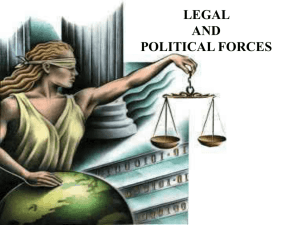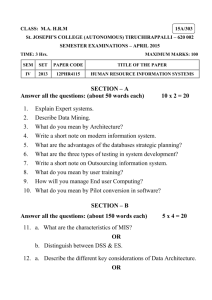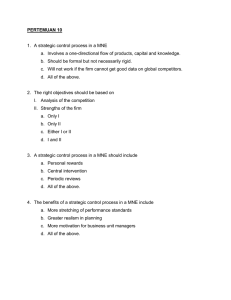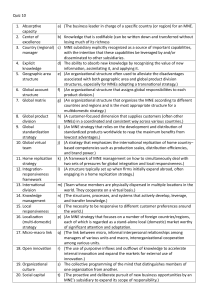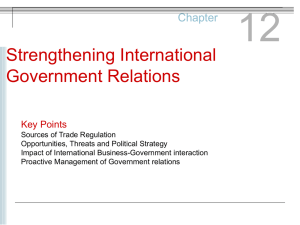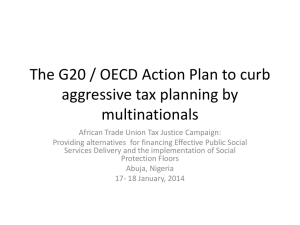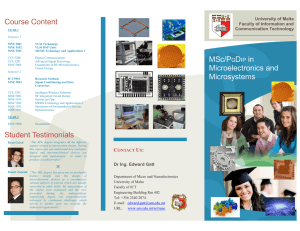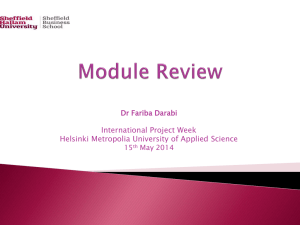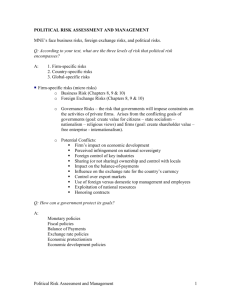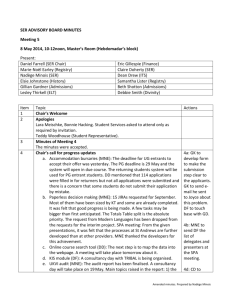INFORMATION SYSTEM FOR MANAGERS
advertisement
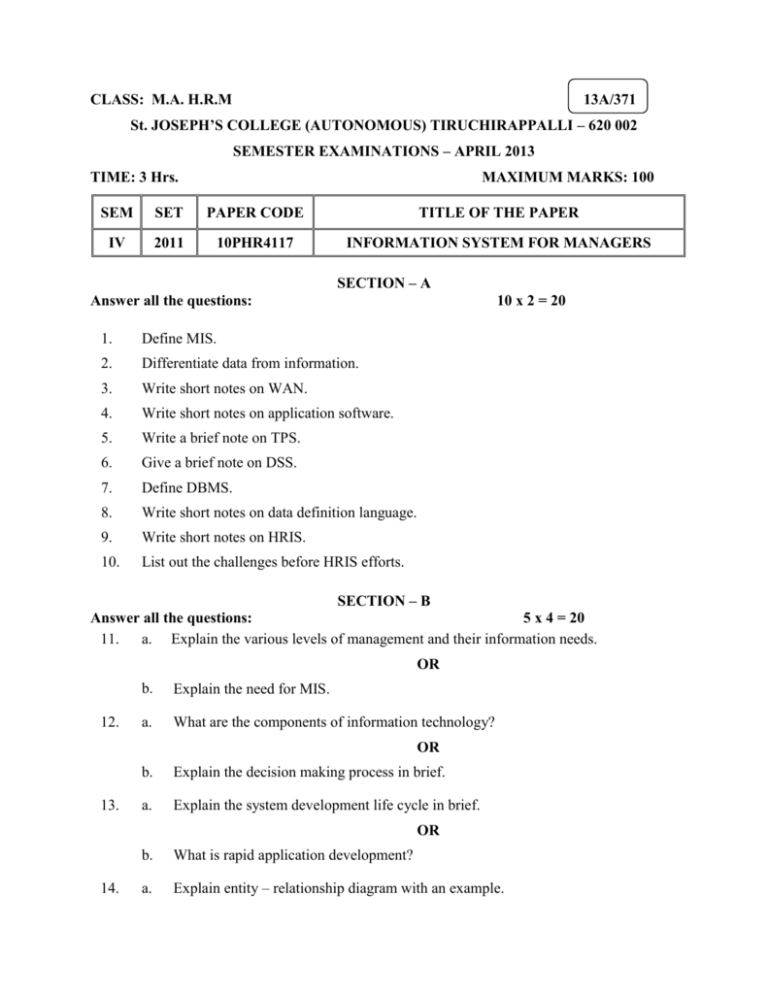
CLASS: M.A. H.R.M 13A/371 St. JOSEPH’S COLLEGE (AUTONOMOUS) TIRUCHIRAPPALLI – 620 002 SEMESTER EXAMINATIONS – APRIL 2013 TIME: 3 Hrs. MAXIMUM MARKS: 100 SEM SET PAPER CODE TITLE OF THE PAPER IV 2011 10PHR4117 INFORMATION SYSTEM FOR MANAGERS SECTION – A Answer all the questions: 10 x 2 = 20 1. Define MIS. 2. Differentiate data from information. 3. Write short notes on WAN. 4. Write short notes on application software. 5. Write a brief note on TPS. 6. Give a brief note on DSS. 7. Define DBMS. 8. Write short notes on data definition language. 9. Write short notes on HRIS. 10. List out the challenges before HRIS efforts. SECTION – B Answer all the questions: 5 x 4 = 20 11. a. Explain the various levels of management and their information needs. OR 12. b. Explain the need for MIS. a. What are the components of information technology? OR 13. b. Explain the decision making process in brief. a. Explain the system development life cycle in brief. OR 14. b. What is rapid application development? a. Explain entity – relationship diagram with an example. OR 15. b. What are the four ways in which distributed database are stored? a. Give a brief note on the role of HRIS. OR b. What are the advantages of employee portals? SECTION – C Answer any FOUR questions about 500 words: (Question -20 compulsory): 4 x 15 = 60 16. Explain the various subsystems of MIS and issues involved in designing MIS architecture. 17. Discuss the functions of information technology and the types of computers. 18. Explain the system analysis and system design in detail. 19. Explain the database design in detail. 20. Case study: A large MNE in the cookware industry was having difficulties maintaining its market share due to a number of mergers among other competing firms in the industry. The MNE, with corporate headquarters in Canada, had production plants in 15 countries and a company presence in a total of 29 countries. Although the firm had a number of competitors, their product was considered as having the highest quality – the Mercedes of cookware. The firm was family owned and founded in 1937. The most pressing problem was how the firm could stay competitive in the market palace and stop decreases in sales. Naturally, it was highly desirable to increase the sales beyond their average annual sales, but first, the firm had to change something to stabilize their place in the market. The CEO and the corporate board, consisting of all the corporate vice presidents as well as the CEOs of all the international locations, examining the problem, concluded that it was necessary to reduce operating costs by 5% to 65% to remain competitive. Thus, it was decided to determine if these cost savings could be achieved in operations, raw materials, finance or HR. The MNE managers examined the latest production technology in their industry. The firm discovered that their technology was fairly up to date and the few technological changes available would only help decreases costs by less than 1%. However, these modifications to their current technology were very expensive and did not appear to have a favorable Return On Investment (ROI). Trying to obtain better financing was nearly impossible since the MNE had very favorable financing currently. The same was true for raw materials, since a decision to use cheaper materials would greatly reduce the quality of their products. As a result, the management of the MNE asked the IHRM department for some suggestions as to how personnel costs could be trimmed. However, there was one constraint established by tradition in the company. The MNE had never had a lay – off of employees in its history, and the CEO refused to use this option to reduce personnel costs. One of the complicating factors was the different labor laws as well as the very different cultures in the 29 countries in which the MNE did business. Questions: 1. How would you approach a solution to this problem for the MNE? 2. Assuming that reducing personnel costs is the best and probably only, way to reduce overall corporate costs, what specific programs would you suggest helping reduce costs? And why? 3. How would an HRIS for the MNE aid in finding HR programs to help solve this problem? What would be the important data to access in the HRIS for all the units and divisions of the MNE to determine feasible HR programs? 4. Are the problems of reducing personnel costs for an MNE different from those for a domestic only company? Explain. **************
